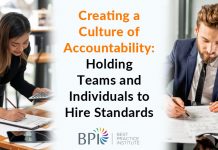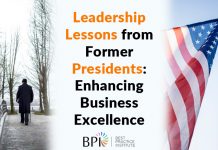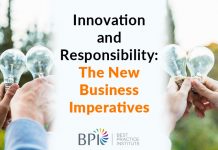Are We All Biased? Yes- Unconscious Bias in the Organization
By Neal Goodman, Ph.D.
Prejudice and discrimination are detrimental to the success of any public organization yet the best available research demonstrates that we all harbor prejudices which can unconsciously. Influence how we act toward one another in our organizations. http://kirwaninstitute.osu.edu/wp-content/uploads/2014/03/2014-implicit-bias.pdf. Many of these prejudices are deeply held in our unconscious. Since many of these prejudices exist beyond the conscious level and are a result of being brought up in a culture that harbors biases we must first acknowledge that they in fact exist. You do not have to be a racist, or sexist to implicitly support racism or sexism. These unconscious biases are not restricted to any one group and they differ significantly from open and legislated forms of prejudice and discrimination such as usage of a derogatory name.
Multiple studies have shown that resumes with names that are related to under-represented groups are not as likely to be invited for an interview as identical resumes with “dominant” group names. So for example, in the US a resume submitted with the name Leroy is less likely to be interviewed for a job than a resume submitted by Jonathan. In the UK, Ali is less welcome than Edward. Resumes submitted by Jennifer also received fewer requests than John. In meetings opinions expressed by women are taken less seriously than the same opinions expressed by men of the same status. Doctors are less likely to do medical tests for people of color etc. One of the paradoxes of such unconscious bias is that those who are discriminated against are also likely to discriminate against their own kind since they have been brought up with the same prejudice as everyone else in the society.
The implications of unconscious bias are clearly that the best and brightest talent is often made to feel unwelcome, invisible and not important for the success of the organization. This results in employees who are detached and likely to take their talents elsewhere.
Organizations are slowly recognizing that they must provide training on unconscious bias to create a more inclusive culture but they often go down the wrong path. There are some positive training considerations that can improve the likelihood that a training initiative can succeed.
What can your organization do ?
Set realistic expectations. Do not over promise and under deliver. Raising expectations that unconscious bias training will eliminate all bias would be disingenuous. The goal is to be conscious of our biases not to pretend to be blind to differences that exist.
Provide appropriate time for the training. It has taken a lifetime to develop our biases; they cannot be overcome in a 2 hour session. Ideally several short sessions or one full day is a minimum.
Provide the training in-person. This topic requires interaction, trust and the opportunity for people to meet in a safe environment. Unconscious bias training is not appropriate for eLearning or webinars. While it may seem cost effective to cover this topic in eLearning or via webinars the sessions there will be very little measurable change.
Be extremely judicious in selecting the right facilitator. Do not select a trainer based only because they took a course on diversity, see this topic as “their passion” or are from an underrepresented group. Trainers should be highly qualified and well versed in the social psychology of attitude formation, be excellent and empathetic facilitators, and have a non-threatening and inclusive style which avoids guilt trips.
Incorporate unconscious bias assessment tools such as those provided by Project Implicit. This tool which helps to uncover hidden biases on many criteria including, race, gender, disabilities, and age has been used by over a million times to uncover hidden biases (http://projectimplicit.net/index.html). Trainers must also know the pitfalls of this test and the way people interpret the outputs from the Project Implicit web site. Trainers must check that the trainees are not misinterpreting results and have support as required.
Unconscious bias training is most effective when focusing on specific real situations such as reviewing resumes, conducting interviews, responding to customers etc. It has been used in the education of judges and potential jurors, in healthcare and in virtually all commercial and governmental organizations. An example of an outcome is asking how to correctly pronounce someone’s name is a micro-affirmation while not using someone’s name because you are afraid of embarrassing yourself is a micro-inequity.
Address the topic on in-group favoritism and how it operates in the organization. Research shows that a lack of diversity creates group think while diverse viewpoints result in more creativity and innovation.
The training should help to identify those situations in which our implicit biases run contrary to our organizations’ explicit values.
Use proven successful simulations, role plays and other interactive exercises that help people take the perspective of others. Many standard tools used in diversity training are inappropriate.
Have groups discuss the word, phrases, symbols, jokes and other symbolic representations of their group which they find offensive and why.
Provide debiasing counter-stereotyping activities such as making associations which go counter to existing stereotypes (male nurses, female scientists, elderly athletes).
Learning about our hidden biases is not sufficient. Successful training must also help the participants to identify and build skills to overcome these biases. There must be an expectation that there will be measurable behavioral changes and that those in the training will support each other in implementing these changes. It is unrealistic to expect that our unconscious biases which have taken years to develop will melt away after a single training program. Follow-up training and or coaching will help to reinforce the original training. Metrics that demonstrate changes in behavior such as the percentages of underrepresented candidates selected for development programs should be a part of any follow-up to demonstrate the commitment to take action.
If organizations want to hire and retain the best and the brightest, increase employee engagement create a culture of inclusiveness that generates innovative then their leaders and employees must learn to identify their hidden biases and make conscious decisions to try to eliminate them in the workplace.
Neal Goodman, PhD is president of Global Dynamics Inc. the leading provider of Cultural Competence, Global Leadership, Virtual Workforce Effectiveness and Diversity and Inclusion solutions to over 200 Global Fortune 500 companies.










